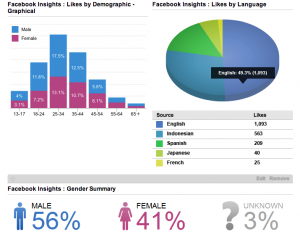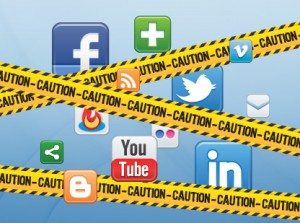
Word of Moth Marketing or WOMM for short, is exactly what it sounds like, an oral or written recommendation by a customer to another potential customer.
It is regarded as the most effective form of marketing.
For example, the Nielsen global advertising survey, said that in 2013, 84% of the people participating trust in recommendations they hear from people they know (today the number is closer to 92%).
According to Mark Zuckerberg; People influence people. Nothing influences people more than a recommendation from a trusted friend. A trusted referral influences people more than the best broadcast message. A trusted referral is the Holy Grail of advertising.

How to get good word of mouth advertising?
Word of mouth marketing is most successful with brands that are working really hard to do right by their customers. This means a great offering partnered with exceptional customer service. The product needs to be strong, but it is just as important that the staff’s interacting with customers and clients is the best it could be.
Another way to create a good word of mouth is to be unique, have a one of a kind product or creative marketing ideas. Such as the Old Spice commercial on YouTube (below).
This commercial has over 52 Million views of YouTube and is so popular because it is funny and weird which people enjoy. This commercial became even more successful thanks to the power of word of mouth. One person saw it somewhere, and started to refer it to a friend or relative, and so on and so forth (Marrs, 2014).
The most time-consuming way to get good exposure of word of mouth is to become a industry thought leader, which means that a person is engaging in dialogue with existing industry leaders and power players while staying up to date on the latest industry news (Whitler, 2014).
One of the most important things to consider when creating good WOMM is to create a good name. Which means that people appreciate a business that is honest and treat their customers right. Using false advertising or trying to trick their customers will experience in bad WOMM and will ultimately lead to a decrease in sales (Bughin, et.al, 2010).
Lastly, a company needs to create an active social community and engage with their customers online.
The most efficient WOMM power brands, convince costumers that by buying their product, they are making a personal statement and joining special ranks.
The most devoted fans may even refer to favorite brands as “family” since certain products or services become part of a customer’s identity (Whitler, 2014).

Negative Aspects of WOMM?
With everything business do on a daily basis handling negative effects that some campaign or product have is probably one of the most common.
The disadvantages need to be taken into consideration before a company decides to rely on WOMM as their primary method of bringing in business.
WOMM can spread slowly, it takes time for employers and employees to spread the word about the product and it can take even longer to reach out to customers who can then keep spreading the word around. To help this a company can post things on their company blogs or social media platforms to reach out faster (Groeger, et.al, 2013).
Tracking issues is another factor that needs to be considered. It is almost impossible to thoroughly track the amount of business generated by WOMM. Asking customers to fill in a survey is one way to find out, but it does not usually cover as many people as needed for the company to make future marketing plans.
The most obvious negative effect of WOMM is negative feedback. If a customer have a bad experience with your business, it is very likely that they will tell other people of the bad experience and they will in turn tell more people and so on and so forth. It is a increasingly bad experience wave that will lead to a lot of potential customers not buying from a business. The only way to deal with this type of issue, is to prevent it before it happens. Every customer needs to be treated equally and never be treated badly by staff or other (Buttle, et.al, 2014).

Conclusion
In conclusion, WOMM is very effective but can be time-consuming, it is always a good marketing tool, even for online based businesses and it can help a business to get a lot of positive feedback and increase sales.
However, it can go the other way and create bad publicity, it is hard to keep track of and it can be a very slow process.
WOMM needs to be taken seriously by any business in today’s society. It either helps increase sales, but it can also rupture a business with one bad experience.
References
How Powerful Is Word-Of-Mouth, Exactly? – The Definitive Guide To Referral Marketing”.ReferralCandy. N.p., 2016. Web. 9 May 2016.
Bughin, J, J Doogan, and O.J Vetvik. “A New Way To Measure Word-Of-Mouth Marketing”. McKinsey & Company. N.p., 2010. Web. 9 May 2016.
Buttle, F and L Groeger. “Word-Of-Mouth Marketing: Towards An Improved Understanding Of Multi-Generational Campaign Reach”. European Journal of Marketing 48.7 (2014): p1186-1208. Print.
Groeger, Lars and Francis Buttle. “Word-Of-Mouth Marketing Influence On Offline And Online Communications: Evidence From Case Study Research”. Journal of Marketing Communications20.1-2 (2013): 21-41. Web.
Marrs, J. “5 Ways To Wield More Word Of Mouth Marketing Power”. Wordstream. N.p., 2014. Web. 8 May 2016.
“The Disadvantages Of Word Of Mouth Advertising”. Smallbusiness.chron.com. N.p., 2016. Web. 10 May 2016.
“What People Watch, Listen To And Buy | Nielsen”. Nielsen.com. N.p., 2016. Web. 9 May 2016.
Whitler, K.A. “Why Word Of Mouth Marketing Is The Most Important Social Media”. Forbes 2014: 1-2. Web. 8 May 2016.



